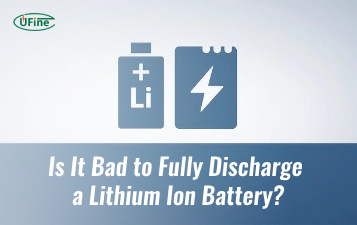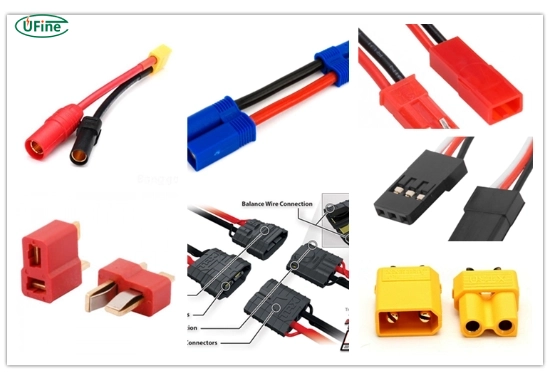
- Part 1. What is a battery terminal extension?
- Part 2. Why are battery terminal extensions necessary for modern power systems?
- Part 3. What types of battery terminal extensions are there?
- Part 4. When do you need a battery terminal extension?
- Part 5. Are battery terminal extensions safe to use?
- Part 6. Do lithium battery users benefit more from terminal extensions?
- Part 7. How do you install a battery terminal extension?
- Part 8. What are the benefits of using a battery terminal extension?
- Part 9. What's the difference between a bus bar and a terminal block?
- Part 10. Can you use terminal extensions in solar battery systems?
- Part 11. FAQs
If you’re looking for a quick and clear explanation of what a battery terminal extension is and when you need one, here’s the answer: a battery terminal extension is a device that expands the number of connection points on your battery terminals, helping you connect more accessories or components when space is limited or your terminals are full.
This small but powerful tool is essential in modern power systems, especially for lithium battery users in RVs, boats, solar arrays, or off-grid setups where space and wiring can be a challenge.
Ready to learn more? Let’s explore what makes this tool so valuable, how it works, and why you might need one.
Part 1. What is a battery terminal extension?
A battery terminal extension is a metallic add-on that connects to your battery’s existing terminals (positive or negative) and creates additional points for wiring connections. It’s like adding an extra outlet when your wall socket is full.
Made from high-conductivity metals like copper, brass, or nickel-plated steel, terminal extensions ensure efficient power transfer while keeping your connections safe and organized.
They are commonly used in:
- RV and camper battery systems
- Marine and boat batteries
- Solar energy setups
- Custom automotive or off-road vehicles
- DIY lithium battery banks
Part 2. Why are battery terminal extensions necessary for modern power systems?
Today’s batteries power more than just vehicles. They run appliances, electronics, solar panels, inverters, lights, and more. But the problem is: battery terminals usually allow only one or two connections.
That’s not enough.
Stacking multiple cable lugs on one post is messy and unsafe, and it can cause loose connections or voltage drops.
A battery terminal extension helps you:
- Add multiple wires safely
- Prevent terminal overload
- Organize your wiring neatly
- Avoid short circuits or cross-connections
This is especially important in lithium battery systems, where terminals are often compact and limited in design.
Part 3. What types of battery terminal extensions are there?
There isn’t a one-size-fits-all solution. Depending on your setup, you can choose from several types of terminal extensions:
1. Post Extensions
These are simple metal studs that raise the height of your terminal post. They help when your wires are too bulky or when you want to stack terminals vertically.
2. Terminal Blocks
Terminal blocks are clamp-style connectors that attach to the battery post and provide multiple screw-down points. They’re ideal for the clean wiring of various accessories.
3. Clamp-On Extensions
These extensions clamp over your existing terminal and usually have bolt-on or screw terminals for extra wires. They’re easy to install and remove.
4. Bus Bars
Bus bars are power distribution bars that give you even more wiring options. You connect your battery to the bar, and all other components connect to the bar instead of the battery directly.
Each type serves a unique purpose, and we’ll explore the differences in more detail shortly.
Part 4. When do you need a battery terminal extension?
You probably need a battery terminal extension if:
- You’re running out of terminal space
- You’re using a lithium battery with small or limited terminals
- You’re connecting an inverter, solar controller, or fuse box
- Your wires are stacking dangerously high
- You want to add components later without redoing your setup
If you’re using your battery for more than starting an engine, especially in off-grid or mobile power systems, extensions are a smart upgrade.
Part 5. Are battery terminal extensions safe to use?
Yes — in fact, they can make your system safer when installed correctly.
Safety benefits include:
- Tighter, more secure connections
- Less risk of overheating
- Reduced chance of short circuits
- Cleaner cable organization
To ensure safety:
- Use high-quality materials (copper or brass preferred)
- Avoid mixing metals (don’t use aluminum with copper)
- Ensure all bolts are tight and corrosion-free
- Match the extension’s amp rating with your system’s load
Also, make sure to disconnect the battery before installing any extension or accessory.
Part 6. Do lithium battery users benefit more from terminal extensions?
Absolutely.
Lithium batteries, especially LiFePO₄ types, are compact and powerful, but they often come with smaller terminals. That’s great for saving space, but not so great when you need to connect:
- Solar charge controllers
- Inverters
- Battery monitors
- Fuses and breakers
- AC/DC distribution panels
A battery terminal extension solves this by giving you more space and safer connection points. It’s a must-have for anyone building a compact and scalable lithium system.
Part 7. How do you install a battery terminal extension?
Installing a terminal extension is straightforward. Here’s a step-by-step guide:
- Turn off all power and disconnect the battery.
- Clean the terminals with a wire brush or cloth to remove any corrosion.
- Position the extension on the post, and align it properly.
- Secure it tightly using the included bolts or clamps.
- Reconnect your wires to the extension.
- Double-check all connections for tightness and stability.
- Apply anti-corrosion spray if in a marine or humid environment.
Always refer to your battery’s user manual for compatibility and torque settings.
Part 8. What are the benefits of using a battery terminal extension?
Let’s break this down:
| Benefit | Why It Matters |
|---|---|
| More connections | Attach multiple cables without stacking |
| Clean installs | Avoid tangled wires and clutter |
| Improved safety | Reduce the risk of shorts or arcs |
| Better performance | Ensure solid, low-resistance contact |
| Scalability | Add components later without rewiring |
| Professional look | Especially important for commercial setups |
In short, they make your system safer, cleaner, and easier to expand — all while protecting your battery and gear.
Part 9. What’s the difference between a bus bar and a terminal block?
Great question — many people confuse bus bars and terminal blocks, but they serve different purposes.
Bus Bars
- A bus bar is a solid metal strip (usually copper or aluminum) that distributes power from a battery to multiple circuits.
- You connect the primary positive or negative wire from the battery to the bus bar, and then run individual wires from the bar to your devices.
- Ideal for high-current setups or when managing multiple loads.
- Often used in solar power systems, RV electrical panels, and marine setups.
Pros:
- High current capacity
- Neat and professional
- Centralized power distribution
Terminal Blocks
- A terminal block is a modular connector that allows multiple wires to connect in one place, usually in a row.
- It provides a secure, screw-down connection for each wire.
- Great for organizing wires, especially in low to medium-current systems.
Pros:
- Easy wire management
- Safer than stacking cables
- Can be used for both power and signal wires
So, which do you need?
- Use a bus bar when you need to distribute high-current power from a battery to multiple heavy loads.
- Use a terminal block when you need to safely connect multiple wires to a single point without heavy current demands.
In many setups, you’ll use both a bus bar for power and terminal blocks for control wiring.
Artikel Terkait: What is a Battery Bus Bar and How is It Different from a Battery Cable?
Part 10. Can you use terminal extensions in solar battery systems?
Yes — and they’re highly recommended.
Solar battery setups often involve:
- Solar charge controllers
- Inverters
- Battery monitors
- Disconnect switches
- Fuses and breakers
If all these wires have to connect directly to the battery, it becomes a mess — and a safety risk.
Using a battery terminal extension, bus bar, or terminal block gives you a clean, expandable platform for connecting all your solar components.
Especially in DIY off-grid systems, extensions save time and reduce wiring headaches.
Part 11. FAQs
Can a battery terminal extension reduce voltage drop?
Not directly, but improving the quality and tightness of the connection can reduce resistance, which may slightly improve voltage stability.
Do battery terminal extensions require maintenance?
Yes. It’s best to inspect them every few months. Look for:
- Corrosion
- Loose bolts
- Frayed wires
Clean with a baking soda and water solution if needed.
Are battery terminal extensions universal?
Some are labeled “universal”, but always check:
- Terminal size (e.g., SAE, M8, M10)
- Polarity (some are explicitly shaped for positive or negative posts)
- An amp rating to ensure compatibility
Can I use an extension on both battery terminals?
Yes, you can use battery terminal extensions on both the positive and negative terminals, but do not mix them up. Always label your connections clearly.
Should I choose a terminal block or a bus bar?
It depends on your setup:
- Choose a bus bar for power distribution (inverters, charge controllers, etc.)
- Choose a terminal block for signal wires or lower-power accessories
In most advanced systems, both are used together for the best results.
Related Tags:
More Articles

Is It Bad to Fully Discharge a Lithium Ion Battery?
Discover what happens if a lithium battery is fully discharged and how to safely recharge 12V batteries to prevent permanent damage.
Does a Higher mAh Battery Last Longer?
Does a higher mAh battery really last longer? Learn what mAh means, real battery life in hours, replacement safety (4000 vs 5000mAh), and real examples.
Exploring the Lithium Ion Battery Fire Temperature
Discover the lithium-ion battery fire temperature and learn how to stay safe. Get essential tips to prevent battery fires and protect your devices today.
The Ultimate Guide to 6s Lipo Batteries
A beginner-friendly guide to 6S LiPo batteries. Understand voltage, capacity, charging tips, safety rules, and real-world applications.
What is the NCMA battery? What is the difference between it and the NMC battery? Which one is better? This article will answer your questions.



